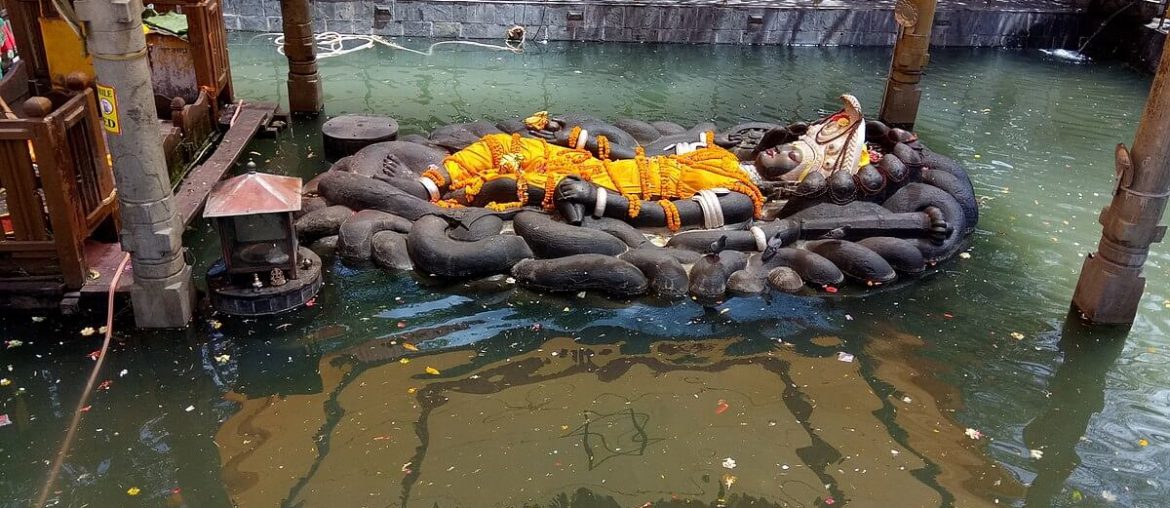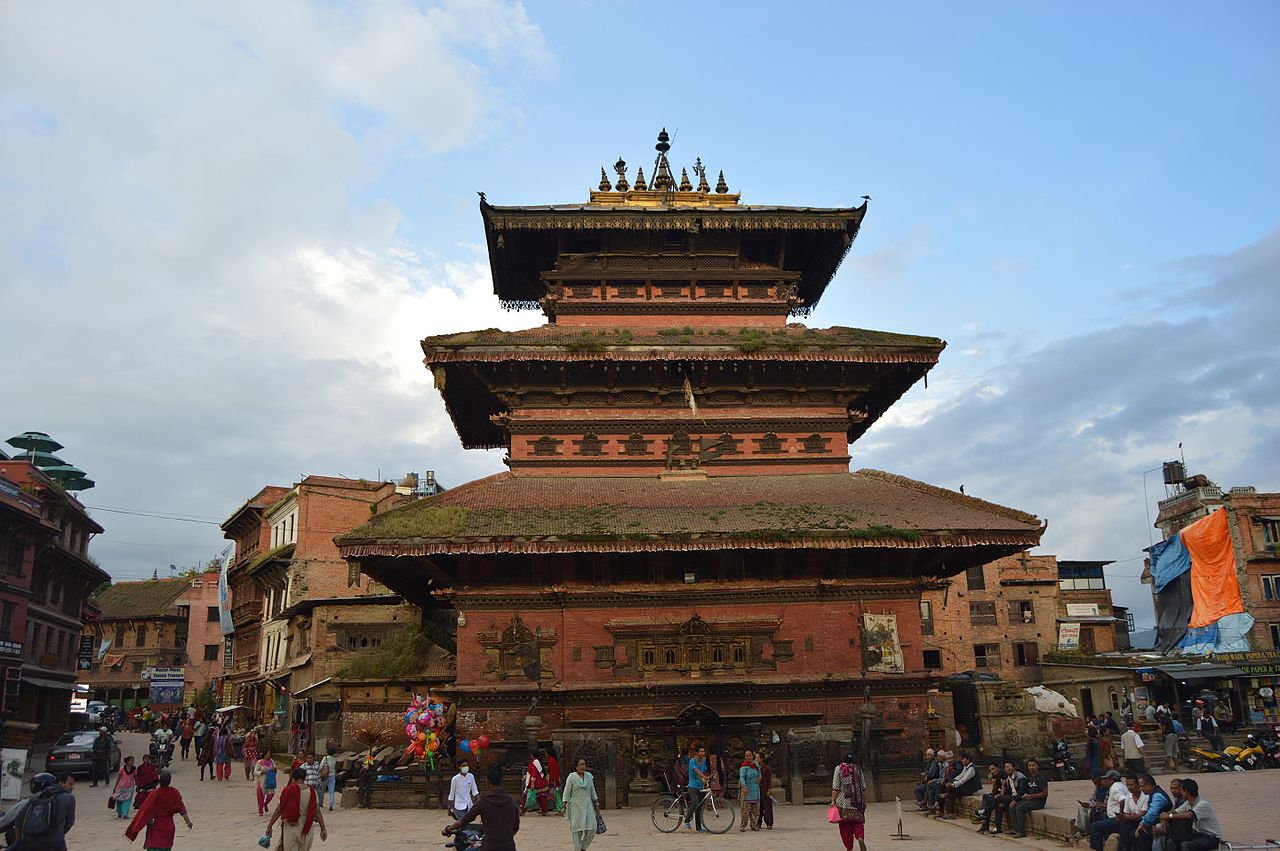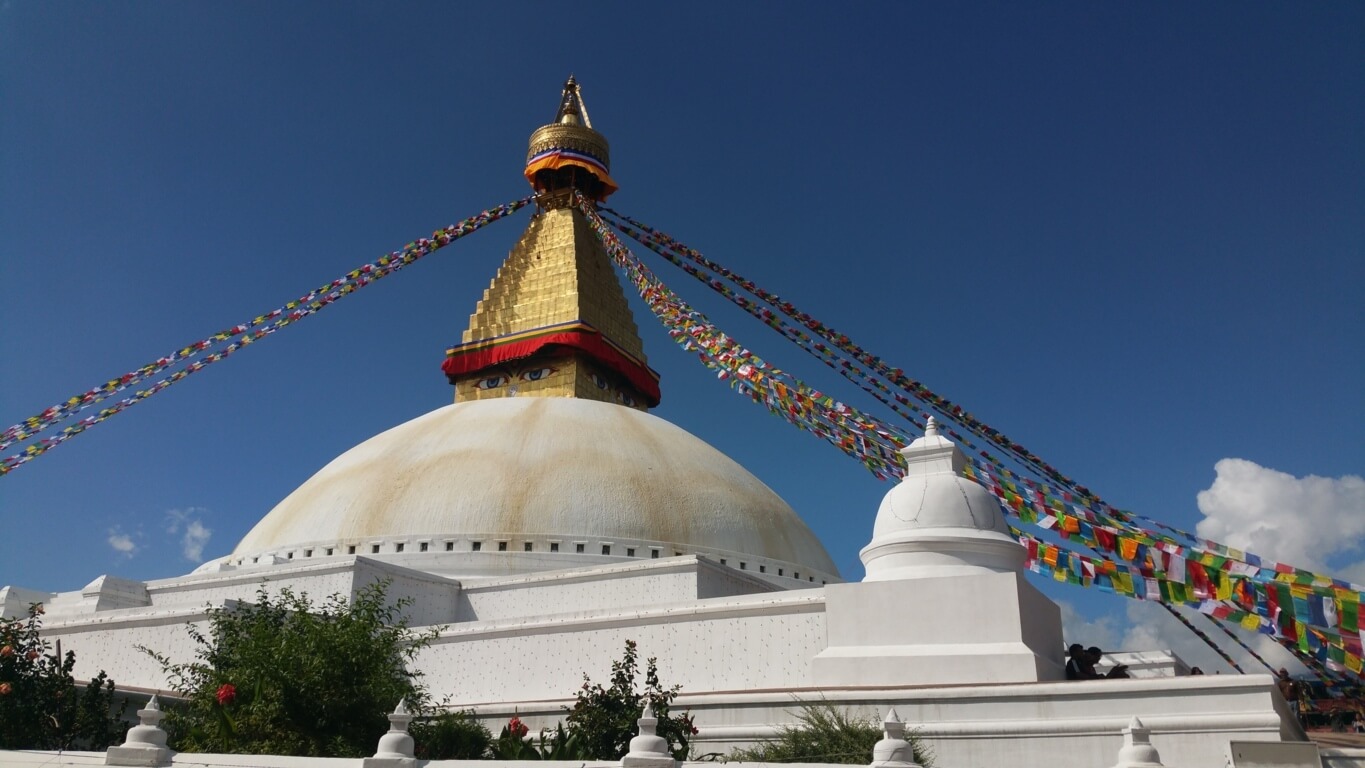Kathmandu Valley
The Kathmandu valley is a legendary land where gods mingle with mortal, ancient pagoda-roofed temples fill the skyline and where a devout population has created one of the finest human cultures on earth. The valley was originally a lake and its history begins with the Buddhist saint, Manjushree, who sliced a passage in the surrounding hills to drain out the water and made it inhabitable. Extremely fertile agricultural land, flourishing trade and a deeply religious population worked together to transform the valley into an enchanting center of art and culture unparalleled in the Himalayan region.
The Kathmandu valley has an exotic setting. It is surrounded by a tier of green mountain wall above which tower mighty snow-capped peaks. It consists of three main towns of great historic, artistic and cultural interest: Kathmandu, Patan and Bhaktapur. The Kathmandu valley covers an area of 570 sq. km. It is situated 1400m (4600ft) above sea level. The architecture started here by the Lichhavi and Malla Kings is marvellous. Kathmandu is the capital city of Nepal having a densely packed with 7 heritage sites counted as one by UNESCO, which are all located within 15 sq. km. The seven heritage sites include the Durbar Squares of Kathmandu, Patan and Bhaktapur, the Buddhist stupas of Swayambhu and Bauddhanath Stupa and the Hindu temples of Pashupati and Changu Narayan.Kathmandu is also known as “City of Temples” having a sheer number of temples.
Pashupatinath Temple, The Holy and Sacred Hindu temple
The Pashupatinath Temple (Nepali: पशुपतिनाथ मन्दिर) is a famous and sacred Hindu temple complex that is located on the banks of the Bagmati River, approximately 5 kilometres north-east of Kathmandu in the eastern part of Kathmandu Valley, the capital of Nepal. The temple serves as the seat of Nepal’s national deity, Lord Pashupatinath. This temple complex was inscribed on the UNESCO World Heritage Sites list in 1979. This “extensive Hindu temple precinct” is a “sprawling collection of temples, ashrams, images and inscriptions raised over the centuries along the banks of the sacred Bagmati river” and is included as one of the seven monument groups in UNESCO’s designation of Kathmandu Valley as a cultural heritage site. One of the major Festivals of the temple is Maha Shivaratri on this day over 1 million devotees visits here.


Boudha Stupa
Leaving the bustling street, the entrance of stupa is adorned with 8 auspicious signs and few steps take you inside which shares the silence of joy, abundant in affluent cultural harmony and incredibly inspiring faith. Located in the North-eastern outskirt of Kathmandu, Boudha Stupa is a vast dome-shaped monument that dominates the skyline of Nepal. Revered by many names; “Jarung Kashor Chörten” for the Tibetans and “Khasti Chaitya” for the local Newari Community. The Great Stupa is shaped like Mandala as viewed from the sky, and also the first pilgrimage heart for Mahayana Buddhist adherents. There are two different stories related to the making of the Great Stupa but believed to be built over the relics of Kashyapa Buddha. People from different walks of life are seen performing Kora (Circumambulation), prostrating, rotating prayers wheels or just talking snaps for memory. However, the stupa is famed for its powers of wish-fulfilment and compassion.
According to Guru Rinpoche’s treasure text, revealed by Lhatsun Ngonmo, the great stupa is connected to the dissemination of Buddhism in Tibet.
The Buddhist stupa of Boudha Stupa dominates the skyline; it is one of the largest stupas in the world. The influx of large populations of refugees from Tibet has seen the construction of over 50 gompas (Tibetan convent) around Boudha. As of 1979, Boudha Stupa is a UNESCO World Heritage Site. Along with Swayambhu, it is one of the most popular tourist sites in the Kathmandu area.

Swayambhunath Stupa
Swayambhunath Stupa (Monkey Temple) is the most ancient and revered holy shrine crowing a lofty hilltop of Kathmandu. The word “Swayambhu” refers to “Self-created or Self-existent Buddha“. Legend has it that the Stupa was evolved out of a radiant lotus flower that bloomed in the middle of a lake when the valley was a vast lake once. Thus, people connect the myth of its origin coeval to the beginning of civilization in Kathmandu Valley. It is considered to be the most powerful shrine in the Himalayas and idealize this monument with the concept of primordial Buddha. Popularly renowned as “Monkey Temple”, it is the captivating shrine for Buddhist, Hindus, and tourists from all over the world.
To reach the hilltop, the devotees should take a challenge since they have to follow the long steepy stone steps leading up to the shrine. A pilgrimage journey to the Swayambhu Stupa is the fascinating jumble to the accumulate merits of lifetime and also catch the sweeping views of Kathmandu Valley in clear day. It also stands as a powerful shrine keeping the balance of religious faith and cultural harmony for centuries. Beside the hill, there is a temple of Manjughosa or Manjushree – bodhisattva of learning like Saraswati in Hindu tradition.

Budhanilkantha Temple
The literal meaning of Budhanilkantha ( Nepali: बुढानिलकण्ठ मन्दिर ) refers to “Old Blue-Throat” which indicates Lord Shiva. But it is the place of Lord Vishnu- the second god in the Hindu triumvirate. Locals usually call it “Narayanthan”. It is another name for Lord Vishnu. The shrine is 8 km far from the city centre to the North. For spiritual seekers, it is an eminent power place protected under the shade of verdant landscape of Shivapuri National Park. It is less touristy but in a peaceful place. Mostly local devotees throng the temple to perform Puja, burn aromatic incense and toss tika (red mark) on their forehead.
The main shrine is the impressive 5m-long supine monolithic statue of Vishnu that floats in a sacred pond surrounded by yellow walls. Representing Lord Vishnu lying in the ocean of existence upon the endless snake named Shesh. Buddhist adherents worship the image as Nilakantha Lokeswara.

Kopan Monastery
Kopan monastery is situated on the outskirts of Kathmandu, near Bouddhanath Stupa in Bouddha. Kopan was conceived by Lama Yeshe and Lama Zopa Rinpoche as a place of study and meditation for students from the Himalayan sangha (fraternity) and foreign countries. It started as a monastic school for the local children in the Solu-Khumbu region (route to Everest base camp); the monastery was later shifted to Kopan, Kathmandu in 1971 to escape the high altitude harsh climate which made study in winter well-nigh impracticable. Hence, the name Kopan. Nearby is the Khachoe Ghakyil Ling Nunnery for nuns.

Patan Durbar Square, Patan
About six or seven km. south of Kathmandu across Bagmati river lies just another city prominently known as Patan but has a secondary name of “Lalitpur” which means a “beautiful city” Full of arts, cultures and traditions, In a true sense, it has even more to give to the visitors than Kathmandu if we visit the ancient royal palace, monuments, stone pillar. Mahabouddha stupa Chaitya and Krishna temple. The very famous Krishna Mandir is right here to enthral the visitors. Here also lies the magnificent Golden temple. The ancient Royal palace squares are just as fresh as before. They still have the same importance as ever Krishna Mandir is a very famous and special type of stone temple; all made of stone. From the second floor Siklhara style emerges, It is said that the main divinity was installed in 1637. On horizontal beams, the episodes of the great Hindus epics Ramayana and Mahabharata are depicted with the explanations of the story.
After 2015 earthquake, Patan Durbar Square is reconstruction still going on but also worth to visit.

Bhaktapur Durbar Square, Bhaktapur
Bhaktapur means “the city of devotees” in the Sanskrit language. It is also known as Bhadgoan and was founded in 889 AD by King Anand Dev. The palace complex in the middle of the city portrays the prosperity of the Malla years and the details at which craftspeople then worked. The palace of fifty-five windows stands in the square and it was home to many Kings of Bhaktapur. They even ruled over Kathmandu and Patan from the 12th century to the 14th century. The massive gate to the square was made by King Bhupatindra Malla (1696 to 1722) who took pride in his own engineering and building skills. Among the other monuments in Bhaktapur temple and the Dattaytreya square with its woodcarving and metalwork museums.

PC: Rabs003

PC: Suraj Belbase




